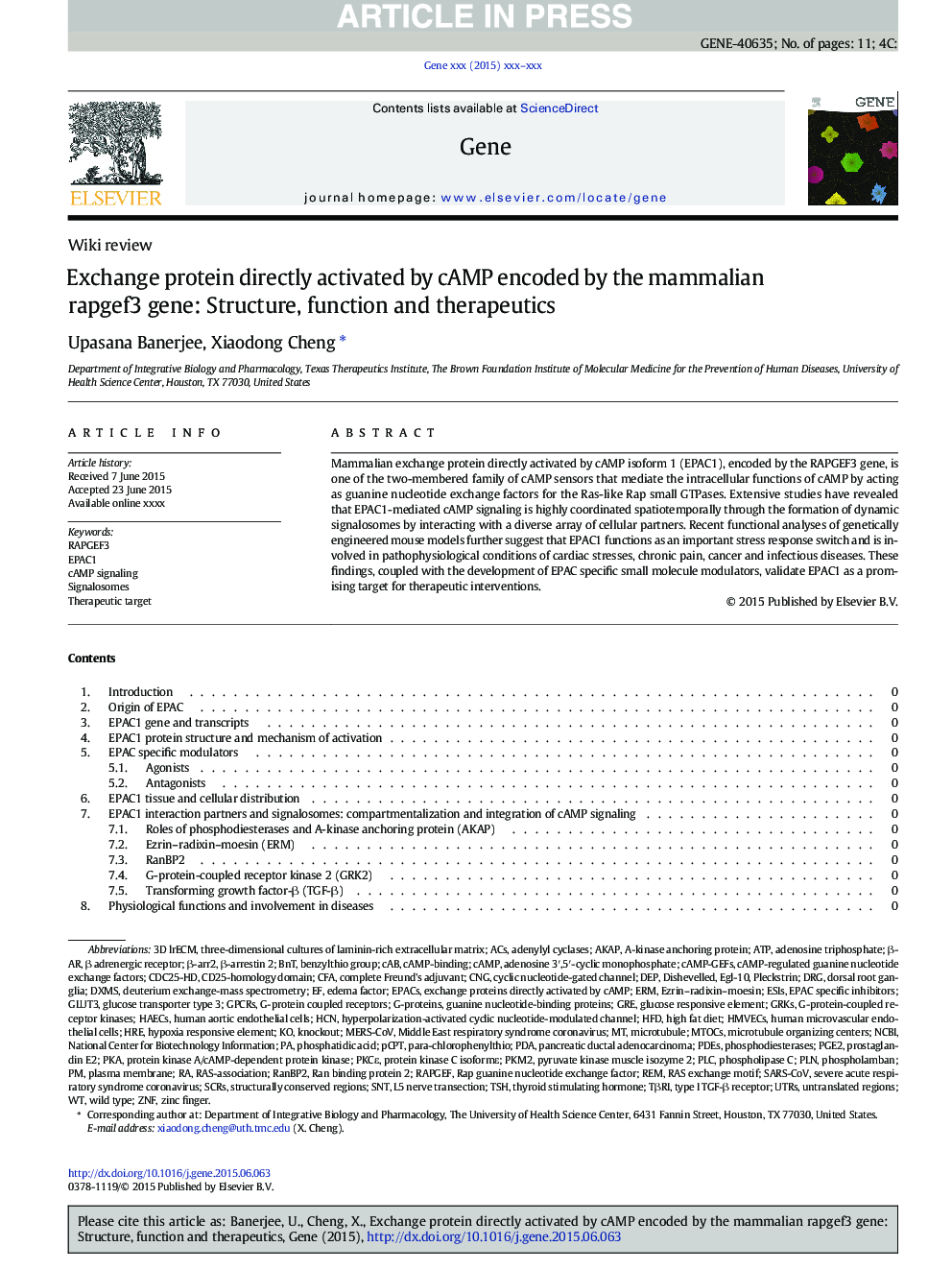| Article ID | Journal | Published Year | Pages | File Type |
|---|---|---|---|---|
| 5905324 | Gene | 2015 | 11 Pages |
Abstract
Mammalian exchange protein directly activated by cAMP isoform 1 (EPAC1), encoded by the RAPGEF3 gene, is one of the two-membered family of cAMP sensors that mediate the intracellular functions of cAMP by acting as guanine nucleotide exchange factors for the Ras-like Rap small GTPases. Extensive studies have revealed that EPAC1-mediated cAMP signaling is highly coordinated spatiotemporally through the formation of dynamic signalosomes by interacting with a diverse array of cellular partners. Recent functional analyses of genetically engineered mouse models further suggest that EPAC1 functions as an important stress response switch and is involved in pathophysiological conditions of cardiac stresses, chronic pain, cancer and infectious diseases. These findings, coupled with the development of EPAC specific small molecule modulators, validate EPAC1 as a promising target for therapeutic interventions.
Keywords
ZNFREMPLCGLUT3β-ARHRECFAPLNSARS-CoVMERS-CoVBNTHAECsUTRsAKAPβ-Arrestin 2PKCεTβRIRANBP2PKM2PDEsPCPTSNTExchange proteins directly activated by cAMPEpac1G-protein-coupled receptor kinasesSCRsDXMSHMVECsMTOCsERMDRGCNGHCNPDANCBIACSDEPPGE2HFDGREGPCRspKaTSHcomplete Freund's adjuvantcAMPMiddle East respiratory syndrome coronavirusG-protein coupled receptorsGRKsadenosine 3′,5′-cyclic monophosphateAdenosine TriphosphateATPPancreatic ductal adenocarcinomaAdenylyl cyclasesedema factorphosphatidic acidZinc fingerCABHigh fat dietMicrotubulehuman aortic endothelial cellshuman microvascular endothelial cellsSevere Acute Respiratory Syndrome CoronaviruscAMP signalingHypoxia responsive elementPlasma membranePhosphodiesterasesphospholambanphospholipase CNational Center for Biotechnology InformationUntranslated regionsknockoutwild typeTherapeutic targetthyroid stimulating hormoneA-kinase anchoring proteinG-proteinsGuanine nucleotide-binding proteinsProstaglandin E2cyclic nucleotide-gated channeldorsal root gangliaβ adrenergic receptor
Related Topics
Life Sciences
Biochemistry, Genetics and Molecular Biology
Genetics
Authors
Upasana Banerjee, Xiaodong Cheng,
